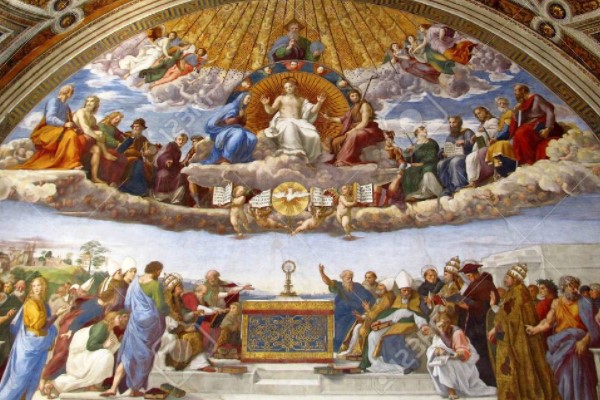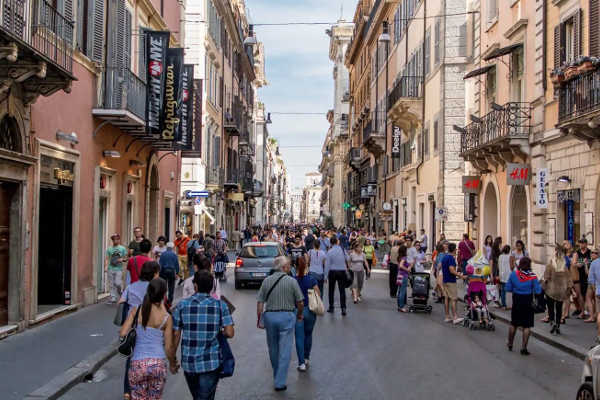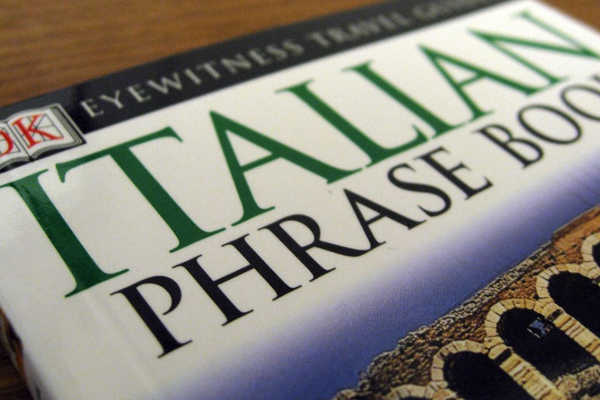Raphael’s Rooms is one of the most popular attractions found within Vatican City.
 |
| Raphael’s Rooms |
A celebrated region holding some of the most priceless pieces of artwork on its interior walls.
Who is Raphael?
He is known as one of the top three masters in the Renaissance era, born in 1483 and coming to fame in 1504. He was born in Urbino, Italy, born into a family of artists, which gave him his passion for fine arts. In 1494, Raphael’s father died, leaving Raphael with the daunting task of taking over the workshop. Despite only being 11 years old, he soon surpassed the success of his father, getting a reputation of being one of the finest painters by his late teens. Due to this, Raphael was offered an apprenticeship with the master painter Perugino. For four years gained hands-on experience, developing his unique style of art. He became known for his sophistication, both in his art and his manners. He easily glided through high society compared to brusqueness of Michelangelo, creating refined and graceful artworks which blended the classical style with the contemporary chic of the time.
The Raphael’s Rooms
Raphael is known for many masterpieces from his career, but none is as famous as Raphael’s Rooms. Featuring four of rooms hidden within the Palace of the Vatican that is covered with a stunning range of frescos. Each room was designed by Raphael, with the extraordinary frescos painted by Raphael, his apprentices, and masters such as Michelangelo and Leonardo da Vinci. The rooms were commissioned under Pope Julius II in when Raphael was only a mere 25 years old. Due to the detail of the rooms, the project occupied the majority of Raphael’s life, not even being complete by the time he passed away in 1520. Overall, despite designing the entire project, only two rooms were fully done by Raphael, with the other rooms being a compilation of his students and other masters. It has become one of Vatican City’s greatest fresco cycles.
The Room of Constantine
The Room of Constantine was first designed to be used for official ceremonies and receptions. Within the room, almost all the artwork done within was completed by the School of Raphael, his many students who helped him during his career. Due to Raphael’s sudden passing, the students crated the frescoes, basing them on the pieces on drawings Raphael did before his death. The name ‘Constantine’ was to honour the first Christian Emperor to recognize the Christian faith, who granted freedom of worship. Also depicting both his struggles and victory of Christianity over paganism. The best pieces of art to see within this room is ‘Vision of the Cross’, the ‘Baptism of Constantine’, the ‘Battle of the Milvian Bridge’, and the ‘Donation of Constantine’.
The Room of Segnatura
Though nowadays it is crowded by hundreds of visitors daily, this room was originally used as a private office and library for Pope Julius II. This room is home to some of Raphael’s most famous works, as it marks his first involvement in the Vatican. This is reflected in the art with a new beginning theme, showcasing the beginning of the renaissance era. The name ‘Segnatura’, was named after Segnatura Gratiae et Lustitiae, which was once the highest court of the Holy See and was headed up by the Pope. Each wall reflects the four branches of human learning; philosophy, theology, poetry, and justice, with the philosophy by far the most popular. Showcasing Plato and Aristotle walking through a grand building, with other great thinkers such as Pythagoras, Euclid, Diogenes, and Heraclitus nearby. Each small detail in the painting has hidden meanings behind it, with the famous figure’s positions even having a significant meaning.
The Room of Heliodorus
After the Room of Segnatura, Raphael began the Room of Heliodorus, created to be used by the Pope for his private audiences. The artworks found in this room depicts a more political angle. On one wall, Raphael has depicted the story of a travelling priest, who doubted that the bread and wine at mass could be turned into the body and blood of Christ, but blood appeared on the cloth upon the altar. Another wall depicts St Leo the Great, who was said to have stopped Attila the Hun from invading Rome. The other two walls depict the Liberation of St Peter and the Expulsion of Heliodorus. Due to Pope Julius passing away before these rooms were completed, Raphael honours the Pope by including him within these paintings.
The Room of the Fire in the Borgo
Lastly, the Room of Fire, which was named after the most famous fresco within named the ‘Fire in the Borgo’. This painting tells the story of Pope Leo IV, who was said to put out a great fire by making the sign of the cross. The image showcases the public frantic attempts to put out the blaze, which contrasts to Pope Leo calmly standing on a balcony above. The entire artwork is meant to show the devotion and trust those should have on their religious leader. Although it was Raphael who drew the first designs for Fire in the Borgo, due to his passing, his apprentice, Giulio Romano completed this fresco.
Related article: What is the Renaissance period known for?
Recommended Vatican Tours: https://www.sightseeingtoursitaly.com/italian-tours/rome/vatican/
Company: https://www.sightseeingtoursitaly.com/
This post was originally posted on https://sightseeingtoursitaly.wordpress.com/2020/08/26/why-you-should-see-raphaels-rooms/




